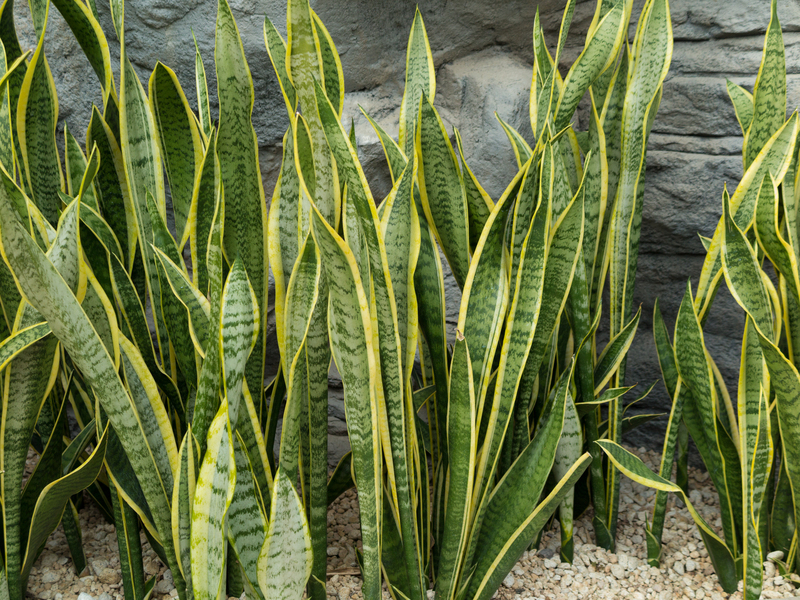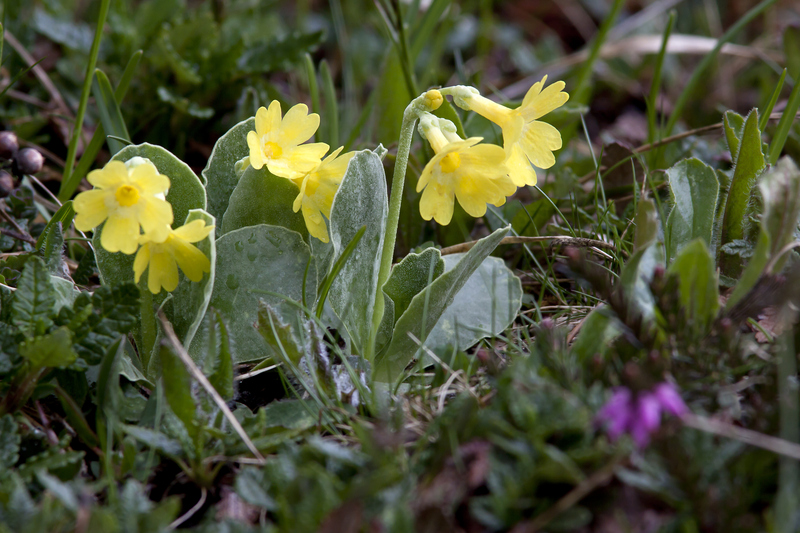Container Gardening: The Modern Approach to Planting
Posted on 26/08/2025
Container Gardening: The Modern Approach to Planting
Container gardening has blossomed into one of the most popular trends for plant lovers and urban dwellers. With limited outdoor space, evolving lifestyles, and a desire for fresh greens or stunning flowers, people are turning to creative ways of cultivating nature. Container gardening is more than just placing a plant in a pot--it's a versatile, convenient, and sustainable method for growing everything from decorative plants to delicious vegetables. Dive in as we explore why this modern gardening approach is thriving, how to get started, and best practices to cultivate a vibrant container garden wherever you live.

What is Container Gardening?
Container gardening refers to growing plants in containers instead of directly in the ground. This includes pots, planters, hanging baskets, and even upcycled items like tin cans, barrels, and old buckets. The method suits both indoor and outdoor settings, offering flexibility for balconies, patios, rooftops, or even windowsills.
In essence, container gardening is the art of converting almost any vessel into a mini ecosystem, enabling the modern gardener to overcome challenges of space, mobility, and soil quality.
Why Choose Container Gardening?
As gardening evolves, container planting stands out as a smart and practical solution for a variety of reasons:
- Space-saving: Perfect for apartment dwellers and urban environments with limited land.
- Mobility: Containers can be moved to optimize sunlight, protect from harsh weather, or simply update the look of a space.
- Soil Control: Gardeners can select the ideal growing medium for each plant, leading to healthier roots and more abundant harvests.
- Pest and Disease Management: Raised containers reduce exposure to soil-borne issues, weed invasion, and common garden pests.
- Versatility: A wide selection of plants--from edible crops to striking ornamentals--can be cultivated together or separately.
- Accessibility: Raised planters and vertical gardens make gardening more accessible for people with mobility limitations.
- Aesthetic Appeal: Decorative pots and creative arrangements turn any corner into a lush oasis.
With these advantages, it's clear why container gardening is the preferred technique for today's busy and creative plant lovers.
Getting Started: Choosing the Right Containers
The first step to successful container gardening is selecting appropriate containers for your plants. The right choice depends on your objectives, available space, and personal style. Let's review the most popular options:
- Terracotta Pots: Classic, porous, and attractive; they offer excellent breathability but dry out quickly.
- Plastic Containers: Lightweight, durable, retain moisture, and available in an endless variety of shapes and colors.
- Ceramic Planters: Glazed pots stay moist longer and are highly decorative, though often heavier and costlier.
- Wooden Boxes and Barrels: Eco-friendly, rustic, and insulate plant roots well. Line with plastic to extend life and prevent rot.
- Metal Bins: Trendy and durable, but can heat up quickly in strong sun, potentially harming roots if uninsulated.
- Repurposed Containers: Old boots, buckets, teapots--almost anything watertight can double as a whimsical planter.
Tip: Ensure all containers have proper drainage holes. This prevents waterlogging and root rot, two common issues in confined planting spaces.
Essentials of Container Garden Preparation
After picking your pots, next comes assembling the ideal environment for your container plants to thrive. Here's your prep checklist:
1. Choose the Right Potting Mix
Unlike garden soil, which can compact and become too dense, commercial potting mix is engineered for aeration, drainage, and nutrient content. You can find special blends for specific plant types--such as cacti, succulents, or vegetables.
2. Add Drainage Components
Place a layer of small stones, broken pottery, or gravel at the bottom of each container to enhance drainage. This helps excess water escape, keeping roots healthy.
3. Plan for Nutrients
Container-grown plants need more frequent feeding because nutrients leach away with regular watering. Use a slow-release fertilizer at planting time and supplement with liquid feed during growing season.
4. Pick Your Plants
Almost any plant can be grown in a pot as long as its light and space needs are met. Consider:
- Sunlight requirements - Full sun, partial shade, or full shade?
- Mature size - Leave enough space for root expansion.
- Growth habits - Trailing, climbing, upright, bushy?
- Companion planting - Pair plants with similar water and nutrient needs.
Best Plants for Container Gardening
The flexibility of modern container gardening is remarkable. Here are some popular species and varieties for planting in pots:
Edibles:
- Herbs: Basil, mint, parsley, rosemary, thyme, and chives do exceptionally well.
- Vegetables: Tomatoes (dwarf and cherry types), peppers, lettuce, radishes, spinach, and eggplant.
- Fruits: Strawberries, dwarf citrus (lemons, limes), figs, and blueberries.
Ornamentals:
- Flowers: Petunias, geraniums, marigolds, pansies, begonias, and impatiens.
- Bulbs: Tulips, daffodils, and hyacinths for spring color.
- Shrubs & Small Trees: Boxwood, Japanese maple (dwarf), hydrangea, lavender, and camellia.
Tip: Mix colorful flowers, trailing vines, and upright specimens in one container for a dynamic display--this is called the "thriller, filler, and spiller" principle.
Arranging, Planting, and Caring for Your Container Garden
1. Arranging Your Containers
- Group for impact - Cluster containers of varying heights, colors, and textures to create points of interest.
- Consider mobility - Place heavy pots on caddies with wheels for easy rearrangement.
- Elevate - Use stands, benches, or wall brackets to enhance visual appeal and drainage.
2. Proper Planting Techniques
- Fill containers two-thirds with quality potting mix.
- Remove plants gently from nursery pots and loosen roots.
- Position plants at the same depth as in their previous pot.
- Space according to plant needs and mature size.
- Backfill with soil, press lightly, and water thoroughly.
3. Essential Maintenance Tips
- Water consistently: Containers tend to dry out faster than ground beds. Check soil moisture regularly and water when the top inch feels dry. Early morning is best.
- Fertilize: Feed your plants every 2-4 weeks during the growing season with a balanced fertilizer or according to specific plant needs.
- Prune and deadhead: Remove spent flowers and faded leaves to stimulate growth and keeps displays tidy.
- Rotate and reposition: Move containers as sunlight patterns shift with the seasons, ensuring optimal exposure.
- Watch for pests and diseases: Inspect leaves, stems, and soil frequently. Remove any affected debris and treat promptly with organic methods if possible.
Innovative Trends in Modern Container Gardening
Modern life demands practical, stylish, and sustainable gardening solutions. Contemporary container gardening has responded with ingenious innovations such as:
- Vertical gardens: Utilize walls, fences, or trellises to create living art with compact edible or ornamental plants.
- Self-watering planters: Built-in reservoirs minimize maintenance and prevent over/underwatering.
- Smart pots: Fabric containers that allow extra air to reach roots, boosting growth and yield.
- DIY eco-planters: Upcycling everyday objects adds personality and sustainability to your garden design.
- Edible ornamentals: Combining beauty and utility with plants like rainbow chard, purple basil, or flowering nasturtium.
The possibilities for container-based gardening are limited only by your imagination and available space.
Seasonal Container Gardening: Year-Round Tips
Container gardening isn't restricted to spring or summer. With thoughtful plant selection and a few adjustments, you can enjoy thriving pots all year long.
Spring & Summer:
- Plant annuals, vegetables, and herbs as soon as frost danger passes.
- Increase watering and feeding as temperatures climb.
- Rotate sun-loving plants for even growth.
Fall:
- Swap out spent summer blooms for hardy asters, mums, or decorative cabbages.
- Plant spring bulbs in pots for early color next year.
- Reduce feeding but continue regular watering.
Winter:
- Grow evergreens, dwarf conifers, or winter-flowering pansies for interest.
- Move delicate containers indoors or to sheltered spots to avoid frost damage.
- Use mulch or bubble wrap to insulate roots in colder climates.
Common Challenges and Solutions in Container Gardening
Like any gardening method, container gardening comes with a few unique challenges. Fortunately, most are easy to address:
- Root crowding: Roots can quickly fill a pot. Repot yearly or trim roots for perennials.
- Watering woes: Too much or too little water leads to stress. Always check drainage holes and use moisture meters for accuracy.
- Nutrient depletion: Container plants exhaust soil nutrients. Refresh with compost or top-dress between plantings.
- Temperature swings: Small soil volumes heat up or freeze faster. Insulate with mulch, group pots together, or use larger containers for delicate plants.
- Pest infestations: Regularly inspect, quarantine new arrivals, and apply organic pest controls if needed.
Environmental Benefits of Container Gardening
Container gardening contributes positively to the environment in multiple ways:
- Reduces urban heat: Plants cool balconies and terraces, improve air quality, and add humidity.
- Promotes recycling and upcycling: Reusing materials for planters lessens waste.
- Conserves water: Small-scale, targeted watering systems use less water compared to large gardens.
- Supports pollinators: Flowering pots attract bees, butterflies, and beneficial insects even in city environments.
- Encourages local food production: Growing edibles at home decreases food miles and reliance on packaged produce.

Frequently Asked Questions: Mastering Container Gardening
1. Can I Grow Trees in Containers?
Yes! Dwarf fruit trees, Japanese maple, olive, and citrus trees can all thrive in larger containers with the right soil and care. Choose pots at least 18-24 inches wide for ample root space--and repot every few years.
2. Do Container Plants Need Special Soil?
Absolutely. Never use garden soil in containers, as it compacts and drains poorly. Use only high-quality, purpose-made potting mix for best results.
3. How Often Should I Fertilize?
Container-grown plants use up nutrients quickly--feed every 2-4 weeks during the growing season, or follow the recommendations on your fertilizer label.
4. Is Container Gardening Expensive?
Not necessarily! Many creative gardeners use upcycled containers, propagate plants, and make their own compost, keeping costs low. Start small and expand as you learn what works best in your space.
Conclusion: Container Gardening for Modern Living
Container gardening offers an accessible, flexible, and creative way to bring the beauty and bounty of nature right to your doorstep. Whether you have a sprawling patio or a sunny windowsill, this modern approach allows anyone to enjoy the pleasures of growing vibrant plants, healthy foods, and gorgeous flowers. With the right containers, rich soil, proper care, and a little imagination, your space can bloom with greenery all year round. Unlock the joys of container-based gardening and transform even the smallest spot into your own living paradise.
Embrace container gardening--the modern, sustainable, and endlessly rewarding approach to planting!
```
